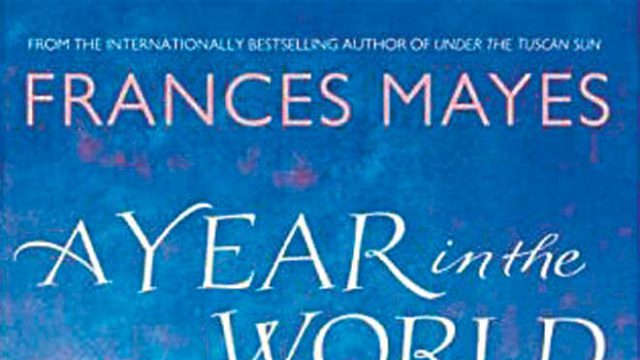If you believe that travel writers should inform rather than editorialize, nip out and buy a guidebook. But if you value an intensely personal account of travel as a window into both a physical and psychic landscape, then Frances Mayes is just the ticket. The author of four books on Tuscany (including the smash hit Under the Tuscan Sun) compresses five years’ worth of travel into a single year, arranged by season. The sights, sounds, smells and above all, taste, of the Mediterranean and the British Isles pass through her alchemical powers of observation to create a unique take on these well-known parts of the world.
Mayes is a poet, teacher and writer who delights in food, architecture, and culture and, most importantly, in going somewhere. With unabated eagerness she takes in the blood oranges and flamenco of Andalucia, the little white churches and tascas of Portugal, the hot indolence and energy of Naples, the Sicilian sun in Taormina, the smell of mint in the labyrinthine medina in Fez, the ghost of Colette and wicked little cheeses in Burgundy. She eats her way through southern Italy. She loves the lush and varied gardens of the British Isles, the mythic islands of Greece, and the warmth of friends in chilly Scotland. She soaks in Turkey’s Lycian coast for eleven days aboard a boat, the less posh bits of Capri which turn out to be even more enchanting, and storybook Mantova.
But going somewhere is, for Mayes, only an experiment in coming home. She is as susceptible to the lure of home as she is to the lure of travel, and so she treats her travels as a test of places she thinks she could call home (for instance, her old habit of looking for real estate offices and ‘for sale signs’ comes back strongly in Ubeda, Spain). Towards that end, she prefers to rent a house rather than book a hotel; it gives her more of a taste of what it might be like to live and cook and walk in this place. Her cultural self is a quivering, highly-attuned thing that believes in total immersion, that reads Spain through Lorca and France through Colette, diving into the minds of people born and bred in that place.
And yet, the reader won’t ever forget that Mayes is a privileged American. Brought up in Fitzgerald, Georgia amid monogrammed sheets and rabbit furs, a teacher and writer, dividing her time between her home in California and her adopted home in Cortona, Italy, Mayes sets a genteel pace and style of travel. She and her husband Ed have a well-established routine: get someplace, fall upon the food and drink, quote poetry to each other, identify the plants, look at the architecture. They’re grandparents in their sixties, and aesthetes; no flagrant luxury, but no roughing it out either. Mayes likes to stay in nice places, open the complimentary champagne, eat truffles and quail and lobster, and follow a great dinner with a nice little dessert wine, nipping into a shop in between to buy up some antique rugs or scarves.
This is not to say that she doesn’t bring a place to life, or that she’s focused on luxury; it’s just that as eager as she is to blend in, her own deeply-ingrained cultural orientation marks her out — somewhat given to romanticisation, somewhat acquisitive, somewhat hide-bound. When she meets a falafel seller in Andalucia, she feels she is meeting “a Moor who came hundreds of years ago, bringing with him cuttings of damask roses, spices, alchemical recipes, and songs. There, Frederico [Lorca], we begin to see.” In north Portugal she’s horrified by the traffic, where they “venture into the middle to pass, straddling the yellow line”.
Those cultural particularities are balanced by more appealing individual ones: she has a bird phobia, occasionally suffers from insomnia has nightmares and most importantly, her purpose is to transform her own origins through travel. Read A Year in the World for its unflinching joy in the great variety of life, and for its immersion in beauty. Despite its hiccups, this travelogue does what the best travelogues do: ignites in the reader a similar desire to go.




